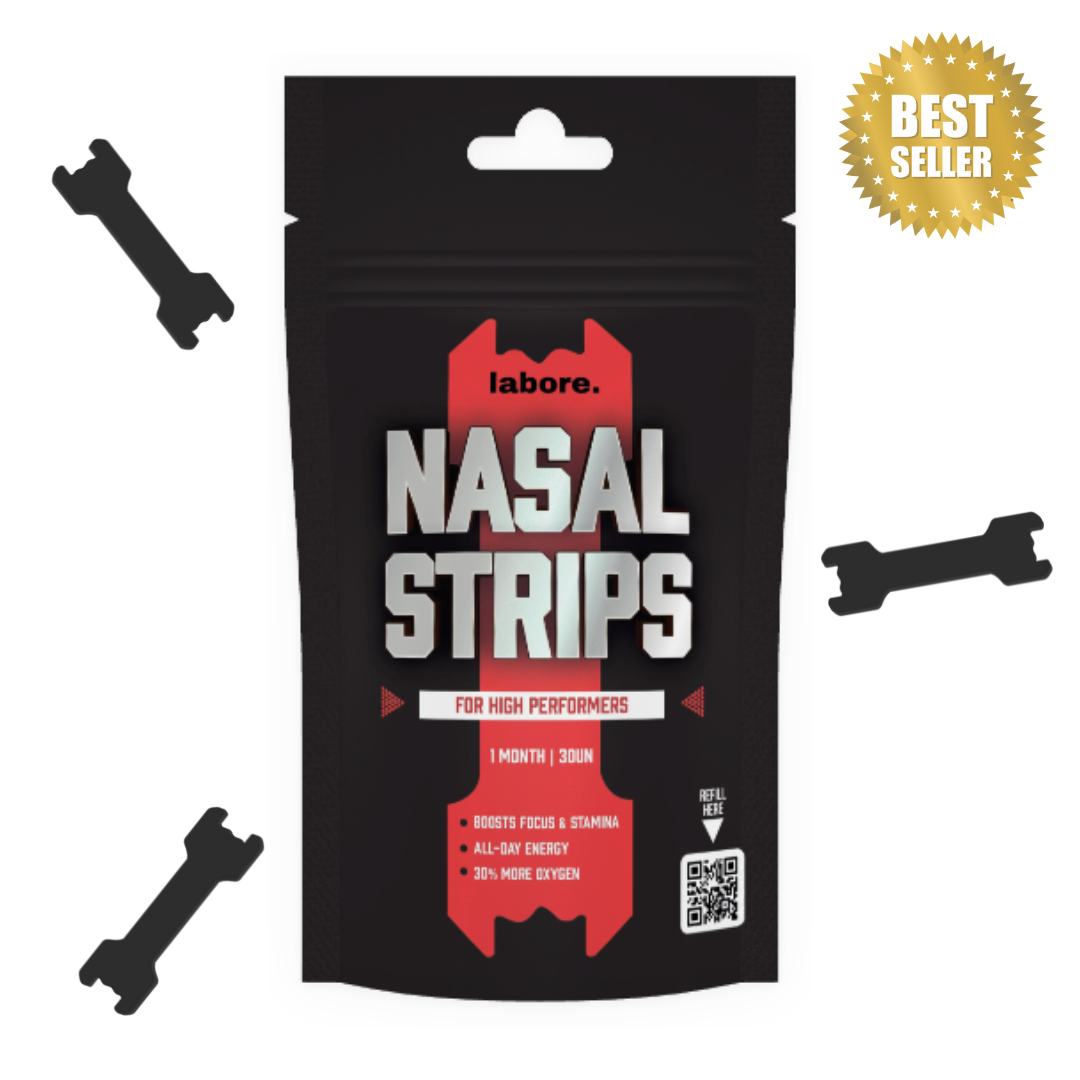Everyone talks about performance. Few talk about air.
You can take every supplement, optimize your lighting, and master your calendar —
But if your body isn’t getting enough oxygen, none of it works like it should.
That’s where nasal strips come in. But are they just a placebo — or backed by real science?
Let’s break down what research says, why breathing through your nose matters, and how nasal strips fit into the performance equation.
🧪 What Are Nasal Strips, Really?
Nasal strips are thin adhesive bands that stick across the bridge of your nose.
They apply gentle tension that lifts and opens the nasal valves — the narrowest part of your airway.
The result?
More air in. Less resistance.
No drugs. No side effects. Just physics.
📊 What the Science Actually Shows
A review of multiple clinical studies shows that nasal strips:
✅ Increase nasal airflow by up to 31%
✅ Reduce nasal resistance, especially in people with mild obstruction
✅ Help reduce snoring and sleep disturbances
✅ Improve oxygen saturation during rest and activity
✅ Are safe, non-invasive, and drug-free
Whether you’re recovering, sleeping, or in a focused work sprint, more air = better performance.
🧠 Why More Oxygen = More Mental Clarity
Your brain consumes roughly 20% of your oxygen intake.
If your breathing is shallow, mouth-based, or obstructed —
You get less oxygen to the brain. That leads to:
-
Brain fog
-
Fatigue
-
Poor decision-making
-
Shallow sleep
-
Anxiety & poor stress tolerance
Nasal breathing triggers:
-
Better CO2 regulation
-
Nitric oxide production (a vasodilator that improves blood flow)
-
Parasympathetic activation (calm, focused state)
And nasal strips make that breathing easier, more consistent and sustainable.
⚠️ The Magnetic Band Illusion: Looks Cool, Fails Hard
You’ve probably seen magnetic nasal bands on TikTok.
They promise the same airflow boost — with a high-tech look.
But here’s the reality behind the hype:
-
❌ Poor durability — magnets lose tension quickly
-
❌ Weak glue — most fall off within 30 minutes
-
❌ Skin irritation — many users report rashes or redness
-
❌ Discomfort — the pressure can hurt cartilage after short use
-
❌ Placement confusion — hard to apply correctly
-
❌ Lack of clinical studies or validation
Magnetic bands are built for trending content, not sustained performance.
They’re cool on camera. Not on your face.

